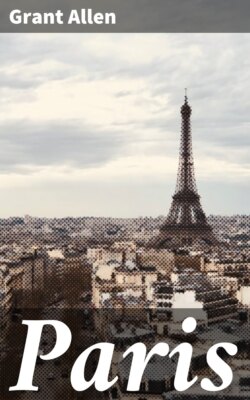Читать книгу Paris - Allen Grant - Страница 11
На сайте Литреса книга снята с продажи.
II
THE LEFT OR SOUTH BANK
ОглавлениеTable of Contents
[THE earliest overflow of Paris was from the Île de la Cité to the Left or South Bank (Rive Gauche).
The reason for this overflow is clear. The city was situated on a small island, near the head of navigation; it guarded the passage of the Seine by the double bridge. Naturally, however, at a time when all civilization lay to the south, as the town began to grow, it spread southward, towards Rome, Lyons, Marseilles, Bordeaux, Toulouse, Arles, Nîmes, and the Roman culture. To the north at that time lay nothing but comparative barbarism—the Britons and the Germans; or later, the English, the Normans, and the Teutonic hordes. Hence, from a very early date, Paris first ran southward along the road to Rome. Already in Roman times, here stood the palace of Constantius Chlorus and Julian, now the Thermes—the fortress which formed the tête du pont for the city. Later, the southern suburb became the seat of learning and law; it was known by the name which it still in part retains of the Université, but is oftener now called the Quartier Latin. At first, however, only a small portion of the Left Bank was built over. But gradually the area of the new town spread from the immediate neighbourhood of the old Hôtel-Dieu, with its church or chapel of St. Julien-le-Pauvre, to the modern limit of the Boulevard St. Germain; and thence again, by the time of Louis Quatorze, to the further Boulevards just south of the Luxembourg. It is interesting to note, too, that all this southern side, long known as the Université, still retains its position as the learned district. Not only does it include the students’ region—the Quartier Latin—with many of the chief artistic studios, but it embraces in particular the Sorbonne, or University, the Institute of France, with its various branches (Académie Française, Académie des Inscriptions et Belles-Lettres, Académie des Sciences, des Beaux-Arts, etc.), the École des Beaux-Arts, the École de Médicine, the Collège de France, the Lycées St. Louis, Louis-le-Grand, and Henri IV, the École Polytechnique, the École des Mines, the Bibliothèque Ste. Geneviève, the Jardin des Plantes, and the Luxembourg Museum of Modern Paintings. In short, the Left Bank represents literary, scientific, artistic, and educational Paris—the students in law, arts, and medicine, with their own subventioned theatre, the Odéon, and their libraries, schools, laboratories, and cafés. It is further noticeable that these institutions cluster thickest round the older part of the southern suburb, just opposite the Cité, while almost all of them lie within the limits of the outer boulevards of Louis XIV.
The Quartier Latin surrounds the Sorbonne, and is traversed by the modern Boulevard St. Michel. The Faubourg St. Germain, immediately to the west of it (surrounding the old Abbey of St. Germain-des-Prés) is of rather later date; it owes its origin in large part to the Renaissance spirit, and especially to Marie de Médicis’ palace of the Luxembourg. It is still the residence of many of the old nobility, and is regarded as the distinctively aristocratic quarter of Paris, in the restricted sense, while the district lying around the Champs Élysées is rather plutocratic and modern than noble in the older signification of the word.
The visitor will therefore bear in mind distinctly that the South Side is the Paris of the Students.]
